
Please Please Me is the debut studio album by the English rock band the Beatles. Produced by George Martin, it was released in the UK on EMI's Parlophone label on 22 March 1963. The album is 14 songs in length, and contains a mixture of cover songs and original material written by the partnership of the band's John Lennon and Paul McCartney.

With the Beatles is the second studio album by the English rock band the Beatles. It was released in the United Kingdom on 22 November 1963 on Parlophone, eight months after the band's debut Please Please Me. Produced by George Martin, the album features eight original compositions and six covers. The sessions also yielded the non-album single, "I Want to Hold Your Hand" backed by "This Boy". The cover photograph was taken by the fashion photographer Robert Freeman and has since been mimicked by several music groups. A different cover was used for the Australian release of the album, which the Beatles were displeased with.
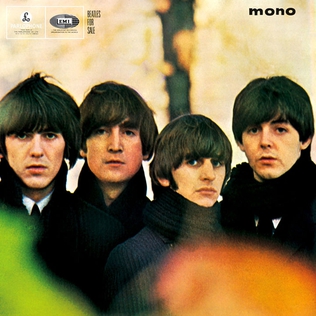
Beatles for Sale is the fourth studio album by the English rock band the Beatles. It was released on 4 December 1964 in the United Kingdom on EMI's Parlophone label. The album marked a departure from the upbeat tone that had characterised the Beatles' previous work, partly due to the band's exhaustion after a series of tours that had established them as a worldwide phenomenon in 1964. Beatles for Sale was not widely available in the US until 1987, when the Beatles' catalogue was standardised for release on CD. Instead, eight of the album's fourteen tracks appeared on Capitol Records' concurrent release, Beatles '65, issued in North America only.

Parlophone Records Limited is a German–British record label founded in Germany in 1896 by the Carl Lindström Company as Parlophon. The British branch of the label was founded on 8 August 1923 as the Parlophone Company Limited, which developed a reputation in the 1920s as a jazz record label. On 5 October 1926, the Columbia Graphophone Company acquired Parlophone's business, name, logo, and release library, and merged with the Gramophone Company on 31 March 1931 to become Electric & Musical Industries Limited (EMI). George Martin joined Parlophone in 1950 as assistant to Oscar Preuss, the label manager, taking over as manager in 1955. Martin produced and released a mix of recordings, including by comedian Peter Sellers, pianist Mrs Mills, and teen idol Adam Faith.
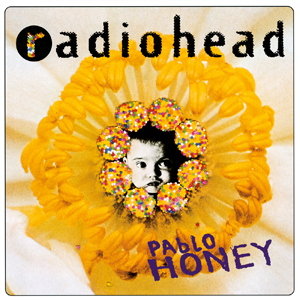
Pablo Honey is the debut studio album by the English rock band Radiohead, released on 22 February 1993 in the UK by Parlophone and on 20 April in the US by Capitol Records. It was produced by Sean Slade, Paul Q. Kolderie and Radiohead's co-manager Chris Hufford.
Apple Records is a record label founded by the Beatles in 1968 as a division of Apple Corps Ltd. It was initially intended as a creative outlet for the Beatles, both as a group and individually, plus a selection of other artists including Mary Hopkin, James Taylor, Badfinger, and Billy Preston. In practice, the roster had become dominated by the mid-1970s with releases of the former Beatles as solo artists. Allen Klein managed the label from 1969 to 1973, then it was managed by Neil Aspinall on behalf of the Beatles and their heirs. Aspinall retired in 2007 and was replaced by Jeff Jones.
This is the discography of Apple Records, a record label formed by the Beatles in 1968. During its early years, the label enjoyed a fair degree of commercial success, most notably with Mary Hopkin and Badfinger, as well as discovering acts such as James Taylor, Hot Chocolate and Billy Preston who would go on to greater success with other labels. However, by the mid-1970s, Apple had become little more than an outlet for the Beatles' solo recordings. After EMI's contract with the Beatles ended in 1976, the Apple label was finally wound up. The label was reactivated in the 1990s with many of the original Apple albums being reissued on compact disc, and the company now oversees new Beatles releases such as the Anthology and 1 albums as well as the 2009 Beatles remastering programme. In 2010, Apple set about remastering and reissuing its back catalogue for a second time.

Catch a Fire is the fifth studio album by the reggae band The Wailers, released in April 1973. It was their first album released by Island Records. After finishing a UK tour with Johnny Nash, they had started laying down tracks for JAD Records when a disputed CBS contract with Danny Sims created tensions. The band did not have enough money to return to Jamaica, so their road manager Brent Clarke approached producer Chris Blackwell, who agreed to advance The Wailers money for an album. They instead used this money to pay their fares back home, where they completed the recordings that constitute Catch a Fire. The album has nine songs, two of which were written and composed by Peter Tosh; the remaining seven were by Bob Marley. While Bunny Wailer is not credited as a writer, the group's writing style was a collective process. For the immediate follow-up album, Burnin', also released in 1973, he contributed four songs. After Marley returned with the tapes to London, Blackwell reworked the tracks at Island Studios, with contributions by Muscle Shoals session musician Wayne Perkins, who played guitar on three overdubbed tracks. The album had a limited original release under the name The Wailers in a sleeve depicting a Zippo lighter, designed by graphic artists Rod Dyer and Bob Weiner; subsequent releases had an alternative cover designed by John Bonis, featuring an Esther Anderson portrait of Marley smoking a "spliff", and crediting the band as Bob Marley and the Wailers.

Harvest Records is a British-American record label belonging to Capitol Music Group, originally created by EMI in 1969.

Light Years is the seventh studio album by Australian singer Kylie Minogue. Mushroom Records released it on 22 September 2000 in Australia; Parlophone released it on 25 September 2000 in the United Kingdom. Following the commercial failure of Impossible Princess (1997), Minogue left Deconstruction Records and took a hiatus from recording music. She signed with Parlophone in June 1999 and decided to return to her pop roots. She worked with various writers and producers, including Steve Anderson, Johnny Douglas, Robbie Williams, Guy Chambers, and Mark Picchiotti.
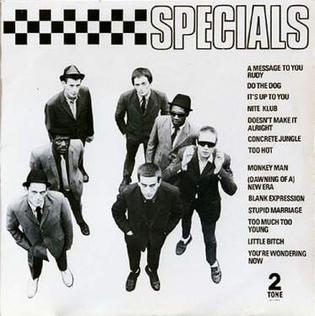
The Specials is the debut album by British ska revival band the Specials. Released on 19 October 1979 on Jerry Dammers' 2 Tone label, the album is seen by some as the defining moment in the UK ska scene. Produced by Elvis Costello, the album captures the disaffection and anger felt by the youth of the UK's "concrete jungle"—a phrase borrowed from Bob Marley's 1973 album Catch a Fire—used to describe the grim, violent inner cities of 1970s Britain. The album features a mixture of original material and several covers of classic Jamaican ska tracks.

Boys Don't Cry is the Cure's first compilation album. Released in February 1980, this album is composed of several tracks from the band's May 1979 debut album Three Imaginary Boys with material from the band's 1978–1979 era.
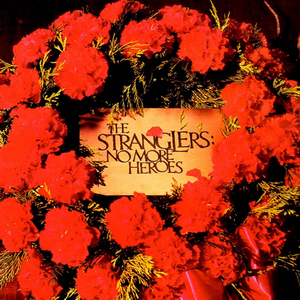
No More Heroes is the second studio album by English new wave band the Stranglers. It was released on 23 September 1977, through record label United Artists in most of the world and A&M in the United States, five months after their debut album, Rattus Norvegicus.
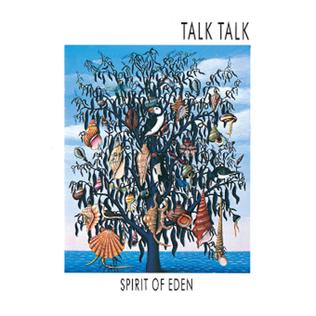
Spirit of Eden is the fourth studio album by English band Talk Talk, released in 1988 on Parlophone Records. The songs were written by vocalist Mark Hollis and producer Tim Friese-Greene and the album was compiled from a lengthy recording process at London's Wessex Studios between 1987 and 1988. Often working in darkness, the band recorded many hours of improvised performances that drew on elements of jazz, ambient, blues, classical music, and dub. These long-form recordings were then heavily edited and re-arranged into an album in mostly digital format.

Odessey and Oracle is the second studio album by English rock band the Zombies. It was originally released in the UK in April 1968 by CBS Records. The album was recorded primarily between June and August 1967. The sessions took place at EMI and Olympic Studios in London.

Meet the Beatles! is a studio album by the English rock band the Beatles, released as their second album in the United States. It was the group's first American album to be issued by Capitol Records, on 20 January 1964 in both mono and stereo formats. It topped the popular album chart on 15 February 1964 and remained at number one for eleven weeks before being replaced by The Beatles' Second Album. The cover featured Robert Freeman's iconic portrait of the Beatles used in the United Kingdom for With the Beatles, with a blue tint added to the original stark black-and-white photograph.

Rattus Norvegicus is the debut studio album by the Stranglers, released on 15 April 1977.
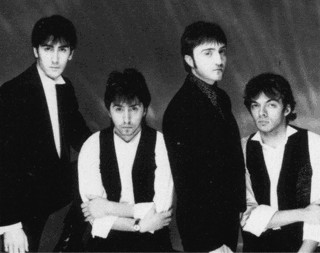
Scarlet Party was a rock band formed in Essex, England, in the early 1980s. The founding members were singer/songwriter brothers Graham and Steven Dye along with drummer Sean Heaphy.
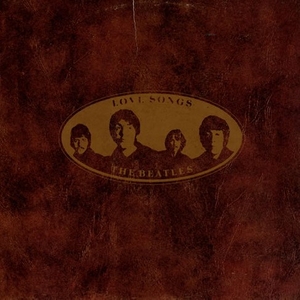
Love Songs is a compilation album that comprises love songs recorded by the Beatles between 1962 and 1970. It was released by Capitol Records in the United States on 21 October 1977 and on Parlophone in the United Kingdom on 19 November 1977. The compilation peaked at #24 in Billboard's Top LPs & Tape chart during a 31-week stay that began on 12 November 1977. The RIAA certified the album with sales of three million units in 2000 even though the compilation was deleted in the late 1980s. The New Zealand release followed the US release with cat. no. and pressing plates, and was released on 2 different EMI labels.
















